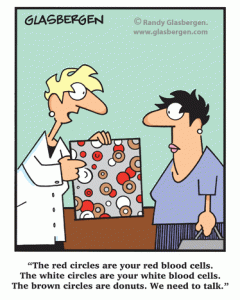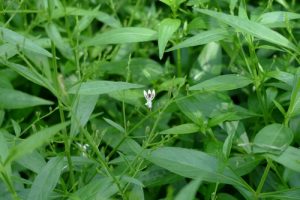 I received my blood test results yesterday afternoon. I’m not pleased at all. In fact, after comparing these results to my previous ones, I went into a bit of a funk and decided to take the rest of the day off… 👿
I received my blood test results yesterday afternoon. I’m not pleased at all. In fact, after comparing these results to my previous ones, I went into a bit of a funk and decided to take the rest of the day off… 👿
When Stefano got home from work and heard about the tests, he admitted that he, too, was disappointed, but he added, “you’ll figure out something. You always have.”
My no. 1 fan…!!! 🙂
Okay, here goes. The main negative is that my total IgG shot up quite a bit. It had been going down pretty much steadily since 2013 (when it also shot up unexpectedly), but yesterday’s results took it back up to the 2013 levels. Aggggh!!! My M-spike also went up, but I should note that it has been higher, so that doesn’t concern me as much…
I’ve been trying to think of possible REASONS and have come up with a bunch of ’em, which are, of course, mere suppositions on my part, since I cannot possibly know WHY this experiment wasn’t as successful as I’d hoped it would be:
- perhaps curcumin and andrographolide aren’t synergistic. I took them at the same time every day. A mistake?
- perhaps the brand was not as good as I thought. I checked it out before ordering it, of course, and it seemed fine to me (a German brand, no bad reviews online, etc.), but…you never know…
- 1. as we know, stress affects myeloma, and 2. I’ve been under quite a bit of stress lately, between Stefano’s shingles and my plantar fasciitis, e.g. Since stress had such a negative effect on my test results in 2013, I just have to wonder if it could have happened again.
The bottom line is: WHO KNOWS?
That said, my other markers are actually okay:
- no Bence Jones;
- kappa/lambda ratio, down a bit (a descending trend since 2016);
- uric acid, within normal range (note: it hasn’t been normal since 2010);
- CRP, fine;
- B2M, normal (note: it hasn’t been normal since 2009, but I’ve never been concerned because it has been only slightly above normal range…still, it’s good to have it within the range now);
- no change in the other two immunoglobulins, which are low but holding their own;
- total protein, slightly lower compared to last tests;
- calcium and creatinine, lower and still nicely within the normal range.
- hemoglobin and hematocrit are fine…both within the normal range.

So the rest of my results are acceptable, or as acceptable as smoldering myeloma results can be (!!!).
The puzzler is merely this jump in total IgG.
Any thoughts? I know that a few of you began taking andrographolide at the same time I did (toward the end of February, more or less). Have you had your tests yet? Oh I so hope your results will be BETTER, much better!, than mine (that would show that the stress thesis is indeed correct…).
I’m sure you won’t be surprised to read that I will NOT be experimenting with any new extracts anytime soon. I need to get my IgG back DOWN, so, starting today, I’m going back on Reishi, which has done so well for me, and possibly ashwagandha (ditto), if I can find a reliable ashwagandha seller over here in Italy.
But oh how bloody disappointing. I was sooo enthusiastic about andrographolide. I still believe, strongly!, that it holds promise as one of the only (two) substances that attack myeloma stem cells, but more research is needed…and caution, too, obviously.
Well, this has taught me what I think is a good lesson: never ever test a new substance during a period of stress. At the first signs of stress, stop the test. Resume it only once things have gone back to normal. From now on, that is what I will do…
